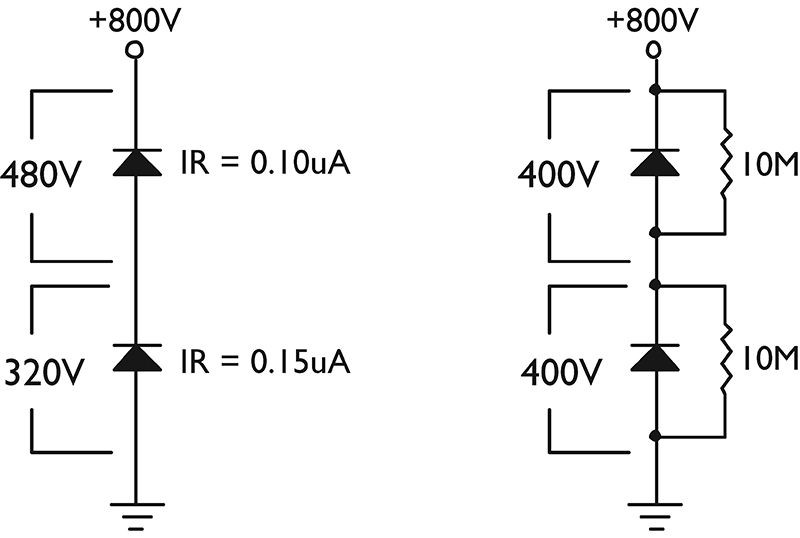With TJ Byers
Diodes in Series
Question:
I have a bunch of 1N4004 diodes, which have a PIV of 400 volts. Now, if I connect two of them in series, does the PIV become 400V + 400V = 800V?
M. John
Answer:
Yep — but with some qualification. Like all things electric, every device is made up of resistance, capacitance, and inductance. In a reverse-biased diode, the two dominant elements are leakage resistance and junction capacitance. The leakage resistance effectively acts like a voltage divider — and unless the leakage current of the diodes are exactly matched, there will be more voltage drop across one diode than the other.
The leakage current of a 1N4004 ranges from 0.05 mA to 1.0 mA, which translates to a resistance of 8,000 megohms to 400 megohms at 400 volts. Let’s say that one diode has a leakage current of 0.10 mA and the other has a leakage current of 0.15 mA. Their equivalent leakage resistance is 4,000 megohms and 2,667 megohms, respectively. This means that the first diode sees 480 volts and the second diode sees 320 volts — not so cool.
When you add in the unequal junction capacitive reactance of the two diodes, the disparity becomes even greater. Unless the diodes are perfectly matched in both respects, I wouldn’t use the stacked diodes beyond about three-fourths of their additive voltages: 600 volts for the 1N4004 pair. A solution to using unmatched diodes to their fullest potential is to place a high-value resistor in parallel with each diode.

Diodes In Series
In this situation, a 10-megohm resistor will equalize the voltage across the diodes and give them an equivalent PIV (peak inverse voltage) of 800 volts. Oh, don’t forget that each series diode drops an additional 0.7 volts. Two in series has a forward voltage drop of 1.4 volts, three equals 2.1 volts, etc.


Comments